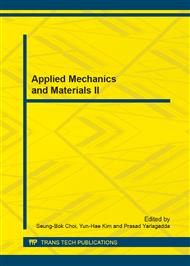p.3
p.7
p.14
p.21
p.25
p.30
p.34
p.39
Optimization of Sonic Boom Suppression by Off-Body Energy Deposition
Abstract:
Sonic boom suppression method is the key technology of next generation supersonic aircraft. Low boom mechanism of the off-body energy deposition is analyzed by using the thermal chocking model. The mass flux of energy deposition region is small than no energy deposition region, and off-body energy deposition will induce a bow shock wave. The mechanism of off body energy deposition is similar with quiet spike, so it can be regard as a virtual quiet spike. Off-body energy deposition analysis software is developed based on CFD, waveform parameter method and NSGA-II genetic algorithm. The location coordinate, value, shape and location number of energy deposition are the key parameters in low boom design. Initial pressure of optimized energy deposition decrease near about 54.65 than no energy deposition, and rise time increase 543.2%.
Info:
Periodical:
Pages:
7-13
Citation:
Online since:
December 2013
Authors:
Keywords:
Price:
Сopyright:
© 2014 Trans Tech Publications Ltd. All Rights Reserved
Share:
Citation:


